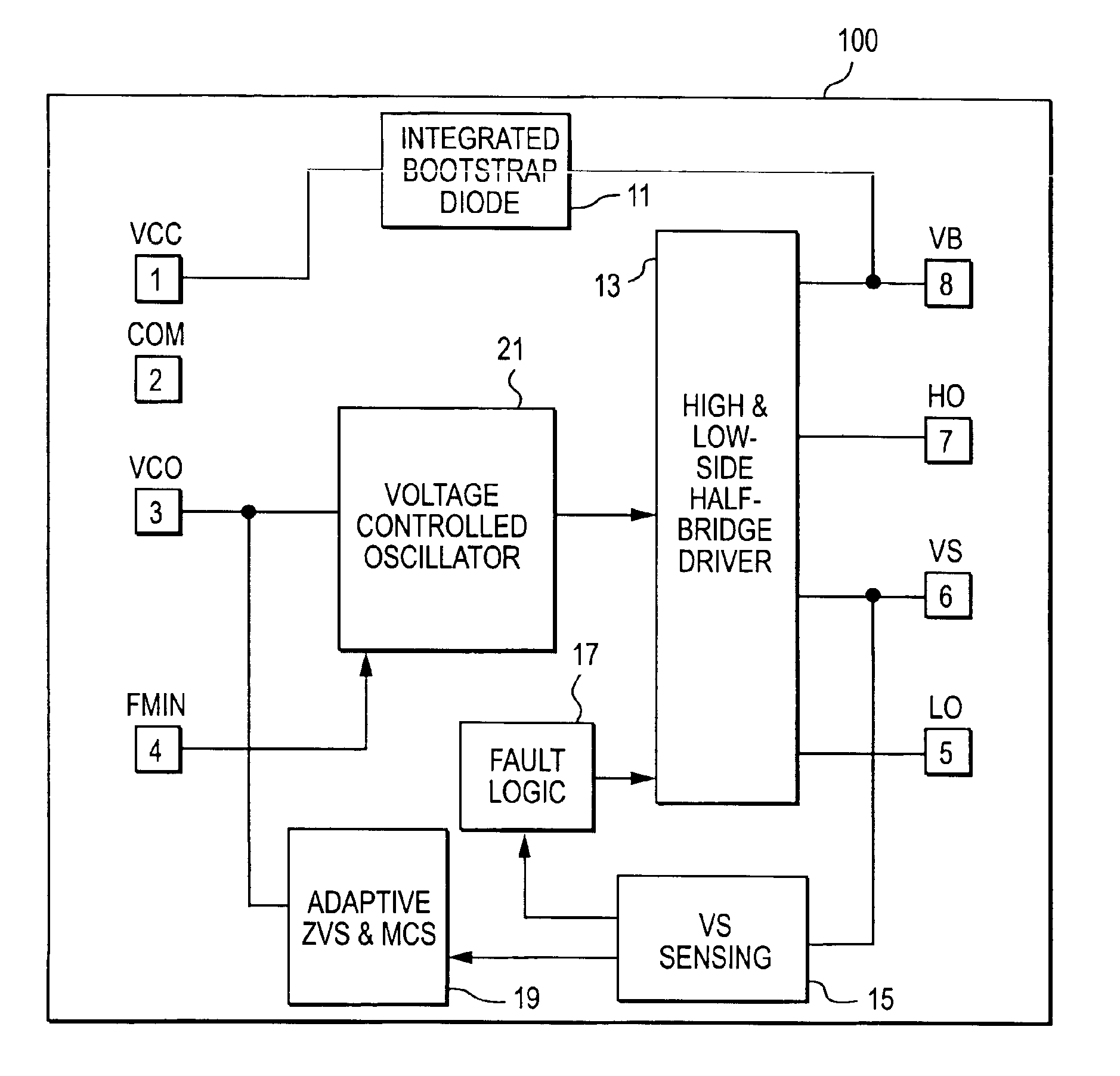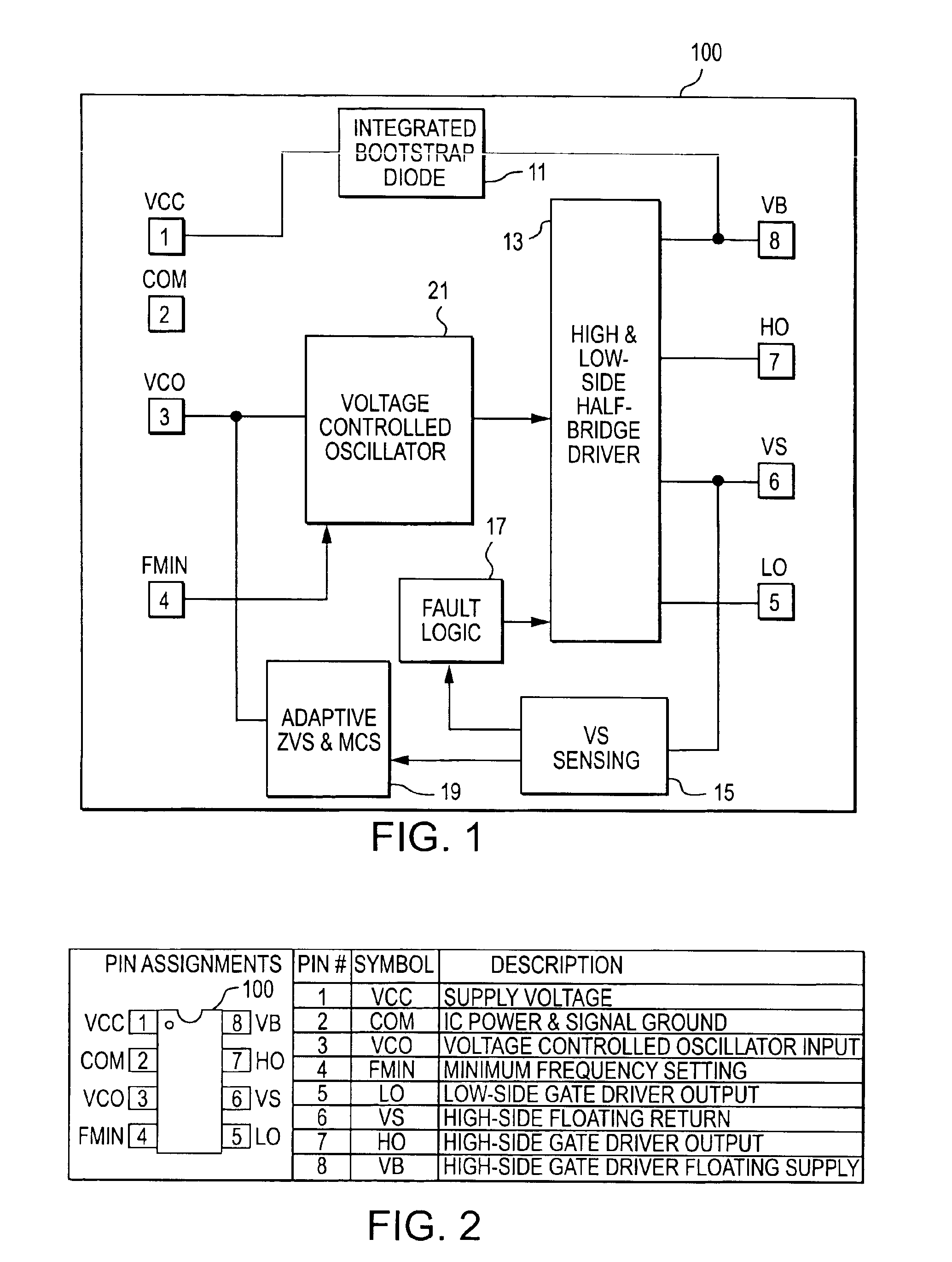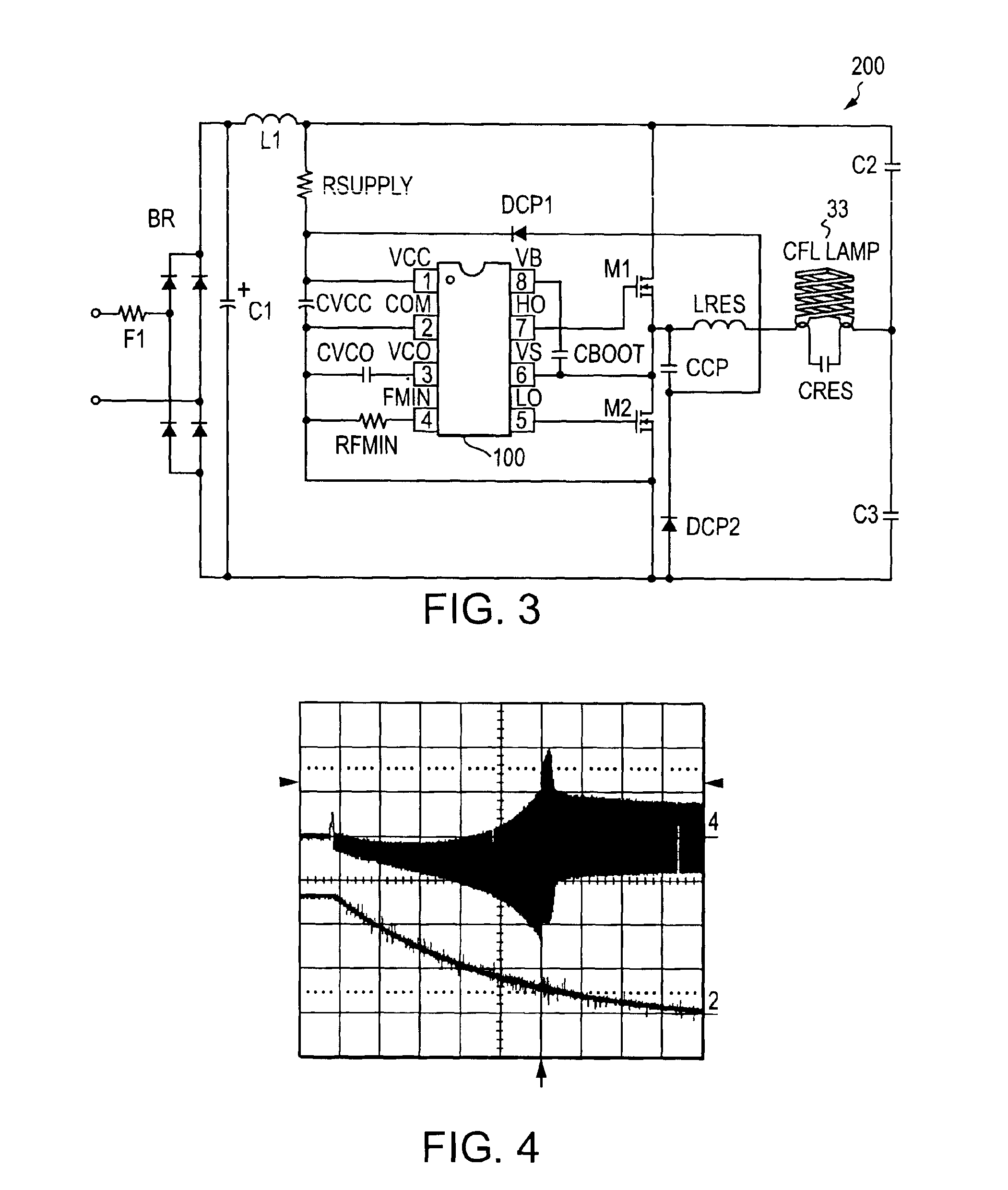Adaptive ballast control IC
a ballast control and adaptive technology, applied in the direction of electric variable regulation, process and machine control, instruments, etc., can solve the problems of poor quality, poor performance, field failure, etc., and achieve the effect of improving performance, improving immunity against system tolerances and variations, and being competitive on cos
- Summary
- Abstract
- Description
- Claims
- Application Information
AI Technical Summary
Benefits of technology
Problems solved by technology
Method used
Image
Examples
Embodiment Construction
[0047]A simple, low-cost IC solution has been developed that integrates multiple CFL functions, plus the high- and low-side half-bridge driver (FIG. 1). In order to minimize packaging costs, the IC has been limited to 8 pins so that it fits into a standard SO8 or DIP8 package. The half-bridge driver requires four pins 8, 7, 6 and 5 (VB, HO, VS and LO), the power supply and return require two pins 1 and 2 (VCC and COM), and one pin 4 is used to program the minimum frequency (FMIN).
[0048]This results in only one control pin 3 available for the ballast functions. To achieve this, a voltage-controlled oscillator analog input pin (VCO) is used together with an internal adaptive control system and method, and a half-bridge voltage sensing technique to realize all of the preheat, ignition, running and fault protection functions.
[0049]FIG. 1 shows a block diagram of the IC, and FIG. 2 is a table of pin assignments of the IC. Referring to FIGS. 1 and 2, the IC 100 has an integrated bootstrap...
PUM
 Login to View More
Login to View More Abstract
Description
Claims
Application Information
 Login to View More
Login to View More - R&D
- Intellectual Property
- Life Sciences
- Materials
- Tech Scout
- Unparalleled Data Quality
- Higher Quality Content
- 60% Fewer Hallucinations
Browse by: Latest US Patents, China's latest patents, Technical Efficacy Thesaurus, Application Domain, Technology Topic, Popular Technical Reports.
© 2025 PatSnap. All rights reserved.Legal|Privacy policy|Modern Slavery Act Transparency Statement|Sitemap|About US| Contact US: help@patsnap.com



